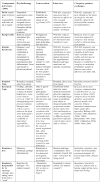Institutionalized ghosting: policy contexts and language use in erasing the person with Alzheimer's
- PMID: 20585465
- PMCID: PMC2888108
- DOI: 10.1007/s10993-009-9153-8
Institutionalized ghosting: policy contexts and language use in erasing the person with Alzheimer's
Abstract
The ordinary social engagement of human life would not usually be considered an arena for language policy. Yet clinical evidence mounts that social interaction improves our lives as we age. Since social engagement decreases cardiovascular risks (Ramsay et al. in Ann Epidemiol 18:476-483, 2008) and delays memory loss among those living in communities (Ertel et al. in Am J Public Health 98:1215-1220, 2008), practices that prohibit social interaction threaten human well-being. For persons who have Alzheimer's disease (AD), social interaction continues to play an integral part in cognitive function and delays in memory loss, according to a longitudinal study of social networks (Bennett et al. in Lancet Neurol 5:406-412, 2007). Increasingly, person-centered care that promotes social engagement for those with AD is promoted as an institutional policy to improve outcomes of dementia care (Edvardsson et al. in Int Psychogeriatr 20:764-776, 2008). Yet the training of caregivers may neither reflect person-centered care nor include attention to communication, suggesting covert policies in practice.
Figures
Similar articles
-
Dementia -- Caring, Ethics, Ethnical and Economical Aspects: A Systematic Review [Internet].Stockholm: Swedish Council on Health Technology Assessment (SBU); 2008 Jun. SBU Assessment No. 172. Stockholm: Swedish Council on Health Technology Assessment (SBU); 2008 Jun. SBU Assessment No. 172. PMID: 28876770 Free Books & Documents. Review.
-
Effectiveness of interventions to improve family-staff relationships in the care of people with dementia in residential aged care: a systematic review protocol.JBI Database System Rev Implement Rep. 2015 Nov;13(11):52-63. doi: 10.11124/jbisrir-2015-2415. JBI Database System Rev Implement Rep. 2015. PMID: 26657464
-
The patient experience of patient-centered communication with nurses in the hospital setting: a qualitative systematic review protocol.JBI Database System Rev Implement Rep. 2015 Jan;13(1):76-87. doi: 10.11124/jbisrir-2015-1072. JBI Database System Rev Implement Rep. 2015. PMID: 26447009
-
Plasma neuronal exosomes serve as biomarkers of cognitive impairment in HIV infection and Alzheimer's disease.J Neurovirol. 2019 Oct;25(5):702-709. doi: 10.1007/s13365-018-0695-4. Epub 2019 Jan 4. J Neurovirol. 2019. PMID: 30610738 Free PMC article. Review.
-
Mammalian Target of Rapamycin at the Crossroad Between Alzheimer's Disease and Diabetes.Adv Exp Med Biol. 2019;1128:185-225. doi: 10.1007/978-981-13-3540-2_10. Adv Exp Med Biol. 2019. PMID: 31062331 Review.
Cited by
-
Giving Them a Voice: Challenges to Narrative Agency in People with Dementia.Geriatrics (Basel). 2019 Feb 12;4(1):20. doi: 10.3390/geriatrics4010020. Geriatrics (Basel). 2019. PMID: 31023988 Free PMC article.
-
Interactions and relationships in long term care: photography and narratives by direct care workers.Cult Med Psychiatry. 2012 Sep;36(3):535-56. doi: 10.1007/s11013-012-9269-8. Cult Med Psychiatry. 2012. PMID: 22539061
References
-
- American Health Care Association. US long-term care workforce at a glance. 2008. [15 Dec 2008]. http://www.ahcancal.org/facility_operations/workforce/Documents/1-pager.pdf.
-
- Balsis S. Evaluations of elderspeak in a caregiving context. Clinical Gerontologist. 2005;29:79–96.
-
- Bartlett R, O’Connor D. From personhood to citizenship: Broadening the lens for dementia practice and research. Journal of Aging Studies. 2007;21:107–118.
Grants and funding
LinkOut - more resources
Full Text Sources

